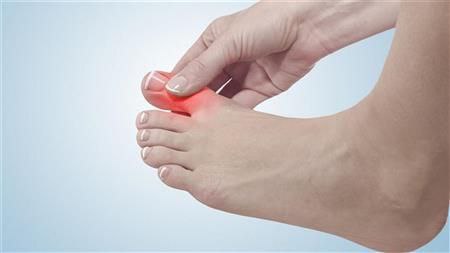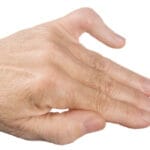Warm soaks, shoe inserts may give you pain relief
Whether it’s sandal season or boot season, you may be thinking it’s time to do something about that bunion jutting out at the base of your big toe.
Doctors call that bunion hallux valgus. It forms when the bone or tissue at the joint at the bottom of the big toe moves out of place. Years of abnormal motion and pressure on the joint forces the big toe to bend toward the others, which causes an often-painful bunion on the joint.
This joint at the base of the big toe carries much of your weight while walking, so bunions can cause severe and constant pain. The joint may become so stiff and sore that shoes are painful to wear.
Are stilettos to blame?
Bunions often run in families, but they also can be the result of the way we walk or the shoes we wear, Head of the Section of Podiatry.
Women develop bunions far more often than men especially as they get older.
People with flexible joints seem to tolerate their bunions more. But others with stiff joints or arthritis usually have more trouble with their bunions and might develop pain earlier
If you develop a bunion, talk to your family doctor. He or she may refer you to a podiatrist who diagnoses and treats conditions of the foot, ankle and related structures of the l.eg.
Treating bunions without surgery
Bunions are permanent unless surgically corrected. But there are some measures you can take to be more comfortable or to slow a bunion’s progression.
For many people, it may simply be a matter of wearing properly fitting shoes. Be sure to choose low-heeled, comfortable shoes that provide plenty of space for your toes and the widest part of your foot.
seven approaches may relieve the pain and pressure on the toe joint:
- Maintain a healthy weight.
- Protect the bunion with a moleskin or gel-filled pad, which you can buy at a drugstore.
- Use shoe inserts to help position the foot correctly. These can be over-the-counter arch supports or prescription orthotic devices.
- Under a doctor’s guidance, wear a splint at night to hold the toe straight and ease discomfort.
- Take non-steroidal anti-inflammatory drugs such as ibuprofen.
- Use warm soaks, ice packs, Whirlpool, ultrasound and massage.
- Buy well-fitting footwear that’s wide in the toe area. Shop at a store where the staff measures your foot and can fit you with an appropriate shoe.
Some people are interested in treating their bunions by stretching the feet to realign the toes, or using devices such as toe spacers or bunion splints. Often though, the device is like a pair of eyeglasses – when you take it off, the benefit is gone.
“It won’t completely realign your toe permanently.
When it’s time for surgery
If your bunion is very painful, your podiatrist may recommend surgery. First do surgery on your shoes. If pain persists for more than a year, it may be time to consider bunion surgery, but most patients will have bunions and pain on and off for years before electing for surgery.
Your doctor also may recommend surgery because bunions can result in other painful foot problems, such as hammertoes, bursitis, a bunion below the little toe, or pain in the balls of your feet, Dr. Botek says. Surgery can be done on mild or severe cases.
Suggested by Cleveland Clinic
When Should I Have Surgery for My Bunions?
When patients come in at an older age, usually it’s because the bunion is causing other problems. For these patients, the pain is more constant or is creating problems with the second toe.
The goal of surgery is to relieve pain and return the big toe to its correct position. A surgeon puts bones, ligaments, tendons and nerves back into correct order, and removes the bump.
There are more than 150 types of bunion surgery, but surgeons typically choose one from about a half-dozen commonly used procedures





